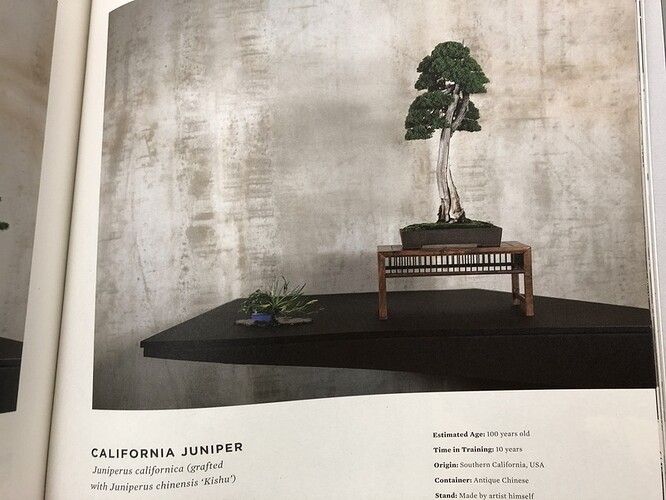Question to the community, when it comes to design do you let the landscape around you guide your approach and if so does that landscape go agents traditional bonsai design. I ask this because i have been meet with negativity when I elaborate on my reasons for the designs i choose with my trees. I live in Michigan and we are mainly a deciduous woodland state. I see lots of trees in the landscape both young, old and ancient having long trunks that are out of the proportion of typical bonsai design. Michigan was and still is a logging state and that being said we have few “ancient” woodlands left. Everywhere I look in both northern and southern Michigan i see trees that might be as old as 100 -150 years but they still have the longer trunk that is inherent to a tree growing in the woods. So this is the direction that i have taken many of my deciduous trees design (if the tree lends it self to that design). Does anyone else see ancient trees in their landscape that doesn’t fit the mold of typical bonsai design and are you using them as a muse in your design?
I am definitely influenced by the landscape around me, but I try to take elements of the growth habits of the trees I’m working on and create a tree that’s more like exceptional trees in nature. If I tried to reproduce the landscape exactly, I would end up with a bunch of bushes, as that’s the shape of most trees in the piñon-juniper woodland. Similarly, if you’re working with an alpine species and you try to re-create the average tree, you’ll end up with a Christmas tree.
I understand the young tree form is going to be shrubs or Xmas trees lol. I’m referring to trees that are old but have forms that are different then that of the typical Japanese bonsai form. I think of the redwood forests. Many of those trees have no foliage till 3/4 the way up the tree yet they are ancient. I don’t see a lot of people reflecting that in bonsai. I see the same kind of form where I’m at (just not as tall or old as the redwoods). Just seeing if there are some other designs that people are exploring that are different yet still ancient.
I look for the tree amongst the rest in the landscape that catches my attention and use it for inspiration. My thought is, if you design the tree after the typical tree in the landscape, people won’t notice it as much because they’re used to it.
Study the tree’s growth habit and how it responds to it’s environment then ask yourself "if this tree grew somewhere else, like in between rocks, on a cliff, or grew from a rotting trunk, or somewhere unusual, how would it grow and survive?"
Just a thought.
We have got very sandy ground here so there are a lot of pinus sylvestris here. The old ones and the ones and the pines the left over for seeds when the fell forests for lumber all look like literati style. So thats is my favorit style and i like styling pines like that. In my dayly work i prune and shorten a lot of trees. They do not have a front the have to look like a tree from all sites.in Bonsai i dont really like trees leanig towards the observer.i like it more when a Bonsai looks a bit natural from all sites.
Hi, I like to imagine the landscape the tree comes from i.e. european larch from the Alps, the olive from Appulia, Italy. Then I look for the story of its possible life. Rocky alpine heavy snows causing breaks and tears and low hanging branches. Or for a heather the sheep contantly chewing on the green shoots and the shrub just surviving year after year. If I had a California Cypress I would try for a style like the Lone Cypress in Monterey has.
This is my favorite style to work with as well. I to have been influenced in the same way. In the forests around me and in northern Michigan I see many young trees (not seedlings but 10-20’ tall tree) in the under-story of the forest struggling for the light. Very literati in form, they have erratic movements due to the tree trying to find the light. This tells a story to me. It may not be one of ancient struggle but a struggle none the less. I see an opportunity to tell this story in our ever evolving american living art (bonsai) form. If the tree lends it self to this form and has visual interest I see no reason not to explore it. Maybe its looks good maybe it looks like crap but you never know unless you try.


